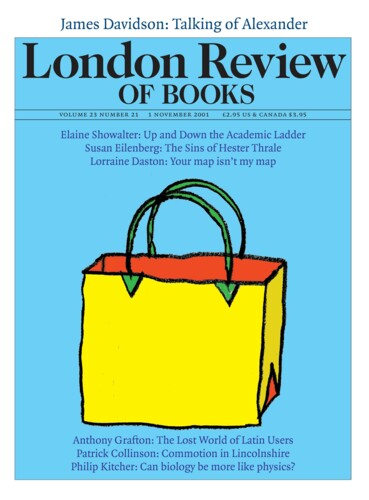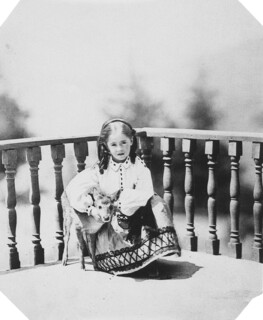Between its professional beginnings in the middle 1800s and the late years of the century photography was a laborious business, protected by heavy equipment, long exposures and messy chemistry from all but serious amateur incursions. This is the period from which the engrossing images in India: Pioneering Photographers 1850-1900 come. It explains their technical competence, a certain stiffness and a high degree of conventionality. Things changed fast, though. Samuel Bourne, who was among the most prolific of the professionals, complained as early as 1870 – after his return to England – of the increasing use of equipment which produced small things ‘fit only for the scrap book’. He also said at one point (but later changed his mind) that India would never provide such good landscape photographs as England because ‘the scenery is not so suitable or well-adapted for the camera.’ The firm of Bourne and Shepherd still exists, in reduced state – the catalogue includes a 1996 photograph of the Calcutta studio (they set up there in 1867). Stucco peels from the brickwork, while a modern sign for Kodak film on the gatepost points to our own photographic culture, which aims to record things – colour, movement, accidents of gesture and composition – beyond the desires as well as the means of the infant craft.
So although the pictures here, drawn from the collection of the British Library and the Howard and Jane Ricketts Collection, do show Kipling’s India – ethnographers and travellers photographed the landscapes, types and tribes which Kim encounters on his journeyings – their monochrome precision is miles away from Kim’s evocation of richly flavoured, brightly coloured, ever-moving life. All that we must add for ourselves. But what we add it to is so circumstantial, so revealing in detail, so inclusive in its often dour record of appearances (and so devoid of the blurring and simplification which photographers with higher aesthetic ambitions found gave a more art-like look) that each image calls you back to see if there isn’t more going on than you had so far noticed.
The most severely ethnographic images were intended to record human types and native costume. They now stand as evidence of a meeting of cultures in which the assumption that useful generalisations can be made (a chequered background sheet might be used to facilitate measurement of height, for example) is contradicted by the individuality of the subjects. Take the row of naked, painted Andamanese men photographed in 1893 by Maurice Vidal Portman. Their bodies are as well matched and formed as those of a team of Olympic gymnasts, but the balanced confidence of the man on the right and the impassive stiffness of the one in the centre fill the mind with questions about individuals, about who these people were, what they were thinking and how they felt about being recruited into this line-up. Such questions can only be answered in words, and the ethnographic photograph has the advantage of avoiding the dissonance between real person and implied message which dogs more fluent photography, in which an individual is made to stand as a symbol – downtrodden poor, filthy rich, or just lovable child – and which led some photographers, Richard Avedon for example, to borrow the ethnographic mode to suggest that the person in a picture can speak for him or her self.
Official portraiture offered its own opportunities. James Waterhouse, who was having a terrible struggle with the heat on an excursion during which he not uncommonly took a portrait nine times before getting a good negative, struck gold in Bhopal, where the Begum joined in the photographic game with enthusiasm, dressing herself, her daughter and members of her household in all manner of costumes so that he could ‘get photographs of the dress of native ladies’. In the photograph here she has the serious look of a child who knows that make-believe is no joke. A photograph from around 1900 of Sir Raghubit Singh, Maharao of Bundi, sitting on a wide cushion with his many-layered skirt spread in front, his sword in his hand and his quite astonishing divided beard spread around his his face in a black, hairy halo suggests that the formality of the Mughal portrait miniature was imported into the photograph by the Maharao’s rather than the photographer’s idea of how these things are done.
In these early days the objectivity of photography was still a wonder. Bourne might at first feel defeated by the refusal of landscape to match the approved forms of Claude or Salvator Rosa but architecture, already ordered by man, had less need of artistic arrangement and was now, as Gaston Tissandier put it in his History and Handbook of Photography of 1879 (quoted in John Falconer’s admirable and informative introduction to the catalogue), safe from the danger of being ‘modified and disfigured by an untrustworthy pencil’. Moreover the task of recording the monuments of India, which seemed doomed to defeat by the sheer size of the task when draughtsmen were employed, looked more manageable when photography became available. The results in this case profit from professional conservatism, large format cameras and conventions of picturesque arrangement inherited from the handsome (if inevitably still ‘untrustworthy’) views of topographers like the Daniels. The characteristics which make some pure landscapes seem boringly repetitive are just what architecture needs – these old pictures put many photographs in modern monographs to shame. When they do achieve a painterly strangeness it is probably accidental. I don’t imagine Linnaeus Tripe (what did his parents hope of him at his christening?) intended his picture of the hill fort at Tirumayam with a row of thatched cottages in front to bring Samuel Palmer to mind.
Photographers even found ways of addressing events which were beyond the reach of late 19th-century technique. Records of the ‘Mutiny’ of 1857 (now, I find, more properly styled a ‘rebellion’ or ‘uprising’) could not include battle scenes (Beato’s photograph of the interior courtyard of the Sikandarbargh at Lucknow strewn with the bones of some of the two thousand Indians killed in its recapture has been shown to be a grisly reconstruction), but the peaceful, uninhabited scene of an atrocity was thrilling enough to become a regular offering from commercial studios.
The Imperial power seems to have felt that documentation was a duty. Professionals found a market for records of landscape, architecture, native types and portraits which extended the coverage. There are pictures in this exhibition which record official life: the guerrilla-swagger of Clifford Henry Meechan, photographed in 1858, just after the Mutiny, among members of Hodson’s Horse, a troop of irregular cavalry; a string of elephants bearing the Viceroy’s staff in procession during the 1902 Durbar; and a number of triumphs of Imperial civil engineering. But others drift into the area of oddities and personal things: a girl on a pony; the Viceroy’s daughter with her pet deer; a bullock cart carrying one of the Rajah of Vallur’s hunting cheetahs; a railway engine being ferried across the Jumna. Our own world, shadowed on the miles of film passing through our cameras, may, despite being so voluminously recorded, turn out to have been less well observed.
Send Letters To:
The Editor
London Review of Books,
28 Little Russell Street
London, WC1A 2HN
letters@lrb.co.uk
Please include name, address, and a telephone number.


